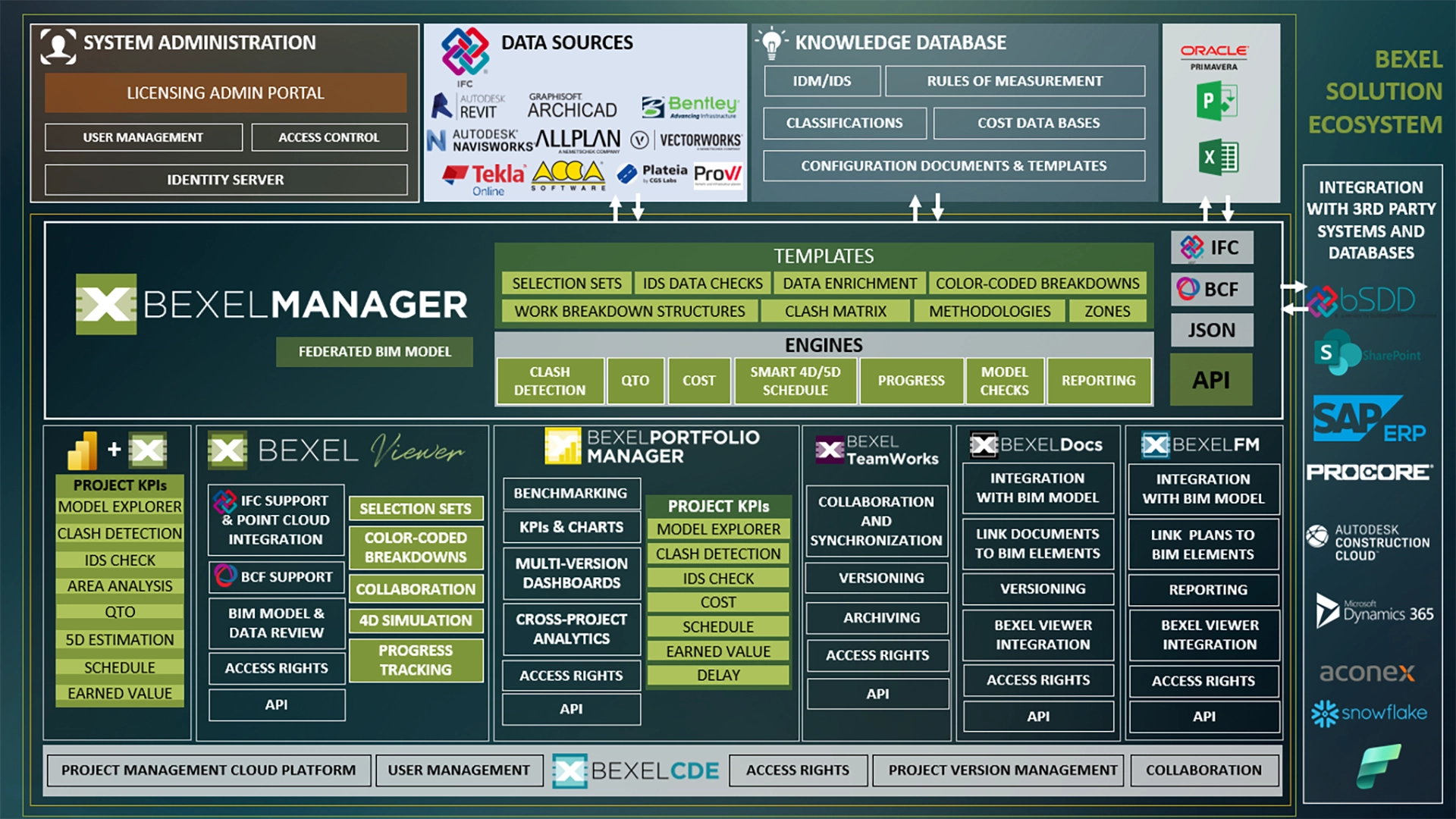Interoperability is the ability of different systems, software, or components to work together and interact towards mutually beneficial goals. It ensures that technologies can communicate effectively and exist together, which is important for efficiency and productivity by streamlining processes and saving time and resources. In the innovation field interoperability allows developers to build on existing systems and integrate new technologies. Also, with Interoperability, organizations have opportunity for cost reduction by reusing existing systems and avoiding custom-built solutions.
Challenges in Achieving Interoperability
The main challenges in achieving primarily comes from differences in data formats, standards, and protocols used by various software applications
Diverse Software Ecosystem: The AEC industry relies on a wide range of software applications, each with its own proprietary data formats and standards. Integrating data between these systems can be complex and time-consuming.
Lack of Standardization: Despite efforts to establish industry standards like IFC (Industry Foundation Classes), there is still a lack of universal adoption.
Legacy Systems: Many organizations still use legacy software that may not support modern interoperability standards, or it is not compatible with newer BIM technologies. Integrating these systems with more advanced software can be challenging.
Data Complexity: BIM models contain vast amounts of complex data, including geometric information, properties, relationships, and metadata. Ensuring consistent interpretation and exchange of this data across different systems is a significant challenge.
Workflow Misalignment: Each stakeholder in the construction process may use different software tools and workflows. Aligning workflows and integrating data is critical for achieving interoperability.
Security and Privacy: Ensuring that data remains secure and private during interoperable exchanges is a constant concern.
Cost and Resource Constraints: Implementing interoperable solutions often requires investment in technology, training, and infrastructure.
Software interoperability
Software interoperability refers to the ability of software solutions to communicate seamlessly and efficiently with each other, enabling smooth data exchange and interaction without the need for specialized IT support or user knowledge in writing codes. Nowadays, when there are numerous applications and platforms, it is crucial to ensure that systems can talk between each other and ensure more collaborative and effective work. For sure, interoperable software accelerates the flow of information, allowing for faster data acquisition from multiple sources and swift adaptation to evolving requirements.
In the AEC Industry, where multiple software applications and tools are used throughout the project lifecycle (project management, documentation management, project design, simulations, visualizations, clash detection, etc.), interoperability is important. The main challenges in achieving software interoperability include using different file formats, data standards, and communication protocols.
Standardized file formats, like IFC is (Industry Foundation Classes file format), have a crucial role in facilitating interoperability in the AEC industry. The IFC file format is an open and neutral data format for the exchange of BIM models. Developed by buildingSMART, IFC files store detailed information about building elements, as well as their properties, relationships, and geometric representations. IFC files enable interoperability between different BIM software applications, allowing project stakeholders to exchange and collaborate on building models regardless of the software they use.
Effective communication protocols are also important for collaboration, data exchange and interoperability in the AEC. BCF stands for BIM Collaboration Format. It’s a file format used for exchanging comments and issues between different BIM (Building Information Modeling) software platforms. BCF files contain information about the location of the issue in the model, a description of the problem, and possibly attachments such as screenshots or documents. This format enables smoother collaboration and communication among project stakeholders by allowing them to share feedback and resolve issues more effectively within the BIM environment. COBie stands for Construction Operations Building Information Exchange. It’s a standard format for exchanging building information during a project’s design and construction phases. COBie defines a structured way to organize and exchange data about a building’s components, systems, and spaces in a spreadsheet format. This information includes details such as equipment lists, product specifications, maintenance schedules, and warranty information. COBie facilitates the transfer of building information from the design and construction teams to the building owner or operator, enabling more efficient facility management and maintenance processes throughout the building’s lifecycle.
Also, BIM Software providers use Open API (Application Programming Interface). Open API allows third-party developers to integrate BIM software with other applications, automate workflows, and develop custom tools and plugins that enhance the capabilities of BIM platforms. By providing access to BIM data and functionalities through API, software vendors promote interoperability, collaboration, and innovation within the BIM ecosystem. Overall, Open API empowers developers to create tailored solutions that address the specific needs and challenges of software users.





